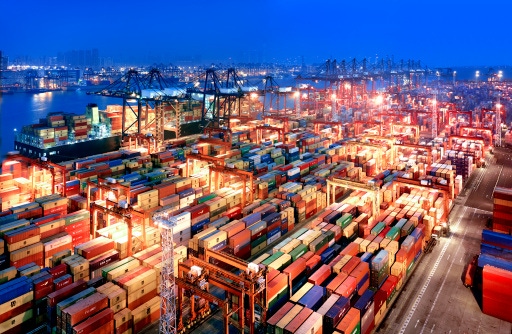Supply Chain Analytics and IoT Loom Large in Wake of 2020 Disruption
The COVID-19 crisis has made disruptive events par for the course. Supply chain analytics, digital twins and other tools have become key to understanding and predicting disruption.
January 18, 2021

Corporations need greater agility and resiliency in supply chains and logistics to succeed. This has prompted enterprises to consider new technologies to ease the way.
Among the candidates are Internet of Things (IoT), infrastructure automation, artificial intelligence (AI) and advanced supply chain analytics. Contenders such as application programming interface (API) integration and digital supply chain twins also loom on the horizon.
Interest in these technologies has accelerated given the global coronavirus pandemic, although they already had a foothold in supply chain management before COVID-19 arose. Further grounding of these technologies in IT environments requires identifying the best opportunities for applications.
Research group Gartner noted extensive IoT penetration in a 2019 survey on the digital business impact on the supply chain. While that same report cast the Internet of Things in the less-than-vaunted Gartner Trough of Disillusionment, there are signs it is beginning to climb back into favor. According to the Gartner supply chain survey, 59% of respondents had partially or fully deployed IoT across their organizations, while 15% planned to invest in IoT within two years, and 22% had established pilots. That data is also consistent with recent data from the 2020 IoT Adoption Survey by IoT World, which indicated that 51% of respondents identified a greater need for digital initiatives, including IoT.
Today, IoT is important because emerging supply chain techniques need the freshest, most accurate data, according to Amber Salley, director and analyst, Gartner. That need for fresh data was acute before a global trade conflict arose and before COVID-19 hit, and more so in their wake.
”Post-COVID supply chain flexibility is not necessarily about a shift in demand, but rather about a shift in consumption,” Salley said, citing the March 2020 example of toilet paper unexpectedly needed in greater supply on store shelves, and less in quantity on trucks headed to offices and public institutions.
This is a time where these types of supply decisions must be made quickly, and executed effectively, on a very granular level. “Companies are trying to quickly respond,” Salley said. “They need to know how best to allocate what stores are getting what.”
Supply Chains Disrupted by COVID-19
Supply chain leaders now sort through long-term technology choices, even as they face the immediate challenge of upended business models and processes. AI-oriented machine learning tools are a case in point, promising supply chain benefits including decision support, real-time asset management, inventory optimization and preventive maintenance planning.
As Salley explains, it can be difficult to separate noise from data when making supply chain decisions, especially in a chaotic environment. Here machine learning tools have a role — but data accuracy is paramount.
“Machine learning for pattern recognition can help,” she said. “Today, we see a lot of companies using such software for help in demand forecasting. But the challenge with machine learning is that it takes a lot of data of very good quality in order to see the correct patterns and to be accurately prescriptive.”
A lot of organizations do not have the sheer volume they need to work with machine learning, although they may have enough for an individual use case, Salley said. Moreover, while vendors tout the benefits of machine learning and AI as a whole, this technology is use-case specific. “You can’t easily map from one use case or domain to another,” she said.
IT pros cannot easily navigate the surfeit of supply chain analytics tools dedicated to their uses, either. Players with supply chain software and machine learning expertise include: Anaplan, Blue Yonder, DHL Supply Chain, EY Supply Chain and Operations, IBM, John Galt, LLamasoft, Logility and SAP.
With IoT devices taking on a greater role in supply chain monitoring, key cloud and machine learning players such as AWS, Google and Microsoft are also part of this landscape. The cloud leaders work with Accenture, Cognizant, Pluto7, TensorIoT and other specialists to tailor supply chain analytical processing for specific areas.
Analytics That Look Backward, Not Forward
While many supply chain pros have grown up working around statistical models to analyze operations, more is needed, said Jeanette Barlow, vice president, IBM Sterling Supply Chain, noting that to some degree, statistical models are most apt for looking backwards
“They are learning from history, and history is a great indicator. But there are things that happen that change history. There’s been no year like this year to exemplify that,” she said.
Over the past year, understanding where inventory is located has only increased in importance. Barlow said the IBM Sterling group uses IBM Watson cognitive AI capabilities to assist teams in scaling data correlations. Such techniques have become more important as IoT has added to the mass of data that must be assessed in limited time frames.
Foundational Technologies for Supply Chain IoT
How ready companies are to add advanced machine learning to the supply chain may depend on where they are on the road to digitization.
Assorted technologies allow them to become more agile; which technology they start with depends on the organization’s technical maturity level, according to Alex Pradham, product strategy leader at John Galt Solutions, which offers the Atlas Planning Platform for automated machine learning in supply chain applications. “Some companies still need more foundational technologies,” she said.
Pradham, too, sees significant shifts in channels and buying behavior. This prompts companies to require more accurate plans for short-term horizons. She suggests reductions in the cost of IoT sensors and the benefits of gathering ultra-fresh data can help operations planning as, increasingly, inventories need constant refresh.
Getting high-quality data is an important first step, agrees John Traynor, vice president and general manager at AI specialist TensorIOT. Useful analytics can be as simple as common moving averages, he said — but having data is key.
“People are ultimately looking for some way to improve operational efficiency. It could be just getting a view of operations. [But] you have to start with valid data,” Traynor said, recalling the time-tested computer design adage “GIGO” (or “Garbage in, garbage out”).
Toward that goal, the company recently worked with AWS and chip aker Semtech to jumpstart digital data collection, creating a kit that connects LoRa (long range) network devices to AWS native services for asset tracking and smart building services.
API integration for Supply Chains
New categories of systems are emerging that leverage IoT to automate and improve data acquisition capabilities, according to Prasad Satyavolu, chief digital officer for logistics and manufacturing at professional services firm Cognizant. The company recently agreed to acquire tech services provider Bright Wolf to expand coverage of IIoT applications, including yield optimization.
“Now, systems can use IoT for data acquisition to create visibility of parts of the entire supply chain,” he said. An even greater advantage is external data that can be integrated into planning systems. In that context, Satyavolu cited application programming interface (API) integration as a key technology ingredient in today’s supply chain innovations.
In recent months, Satyavolu noted, several manufacturing companies have incorporated data from the Johns Hopkins Worldwide Dashboard for statistics on the COVID-19 pandemic. “You use that as an API and bring it back into systems to gain visibility into the global ‘state of the union,’” he said. This has helped significantly in production planning.
Supply Chain Digital Twins
Count what Gartner calls the “digital supply chain twin” as yet another technology to watch although it is still in its early stages.
The analyst group defines the digital supply chain twin as a “dynamic, real-time and time-phased representation of the various associations between the data objects that ultimately make up how the physical supply chain operates.” As such, it both resembles and differs from aspects of product-life management tools, simulation software and statistical models — as well as, for that matter, the robot that crawls through tsunami-damaged reactors in Japan’s decommissioned Fukushima nuclear power plant.
Using digital twins for the supply chain can simulate warehouse operations and inventory levels, and provide a testbed for what-if analysis of different supply chain scenarios. In Salley’s estimation, the digital supply chain twin entails a model built using data harvested from the actual supply chain environment to mirror activity. Weather and other external data can be included in the modeling.
For now, the software types involved in building a digital twin for the supply chain are diverse. Other than supply chain mainstays, vendors like Ansys, Dassault, GE, MathWorks, PTC, Siemens and others are in the hunt.
Implementing digital twin technologies in the supply chain begins with identifying problems and choosing a candidate to address first. Tackling a known business issue is a good place to start, Salley and others advise. She said to expect digital supply chain twin projects to start out on a small scale to prove out the technology and use cases.
Salley also cautioned that legacy systems may not naturally take to these new methods. Some new infrastructure may be required.
“One issue is that the digital supply twin does require more recent infrastructure,” Salley said. As an example, she pointed to the use of emerging graph databases, as opposed to relational databases, to map the complex interconnections between networked objects in the supply chain.
As with machine learning, feeding the system with good data is a necessity with digital twins. Salley said the benefits of digital supply chain twins come from data of “high granularity and low latency. And that’s where IoT particularly comes into play.”
Informed by streaming IoT device data, supply chain managers can be forewarned that an assembly line is about to go down, where parts are needed to keep the line running, or where production can be shifted to supplement the line’s production — all familiar production-line scenes of late.
The questions supply chain, operations and IT managers are asking today are driven by the “desire to be more digital,” Salley said. “There will always be some disruption.” The need now is to work with technology and people to gain better visibility, agility and resilience — and to make the right decisions, even under pressure.
About the Author(s)
You May Also Like



.png?width=700&auto=webp&quality=80&disable=upscale)
.png?width=700&auto=webp&quality=80&disable=upscale)
.png?width=300&auto=webp&quality=80&disable=upscale)
.png?width=300&auto=webp&quality=80&disable=upscale)
.png?width=300&auto=webp&quality=80&disable=upscale)
